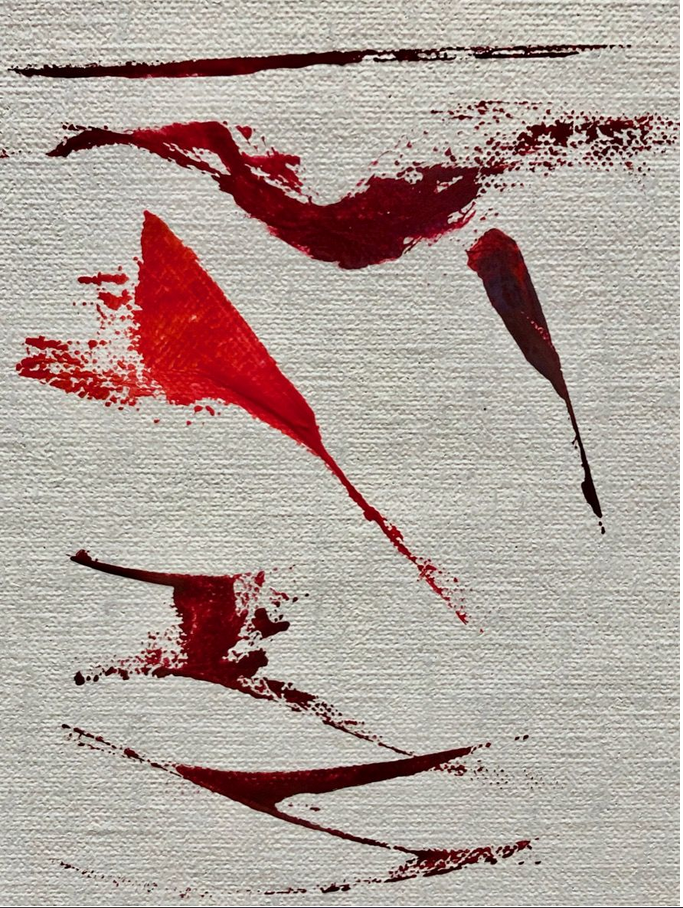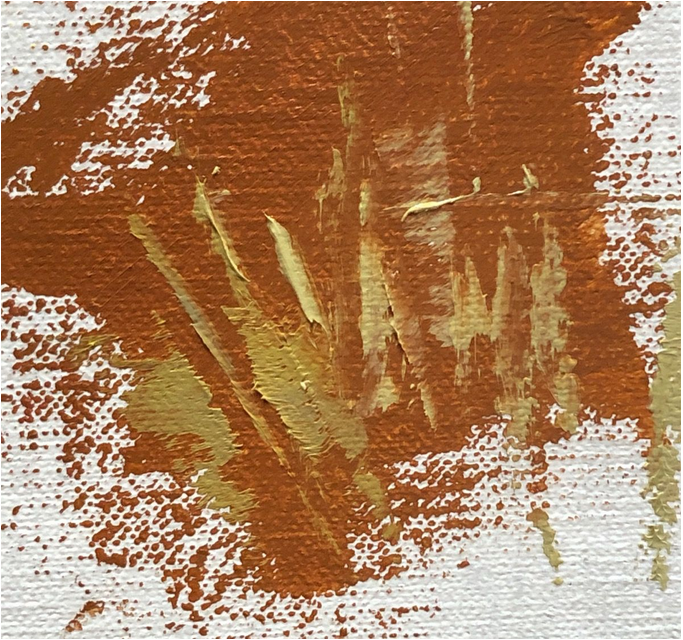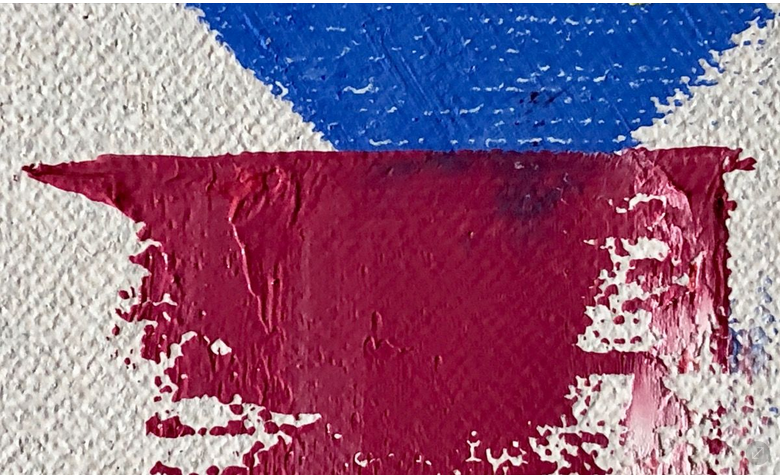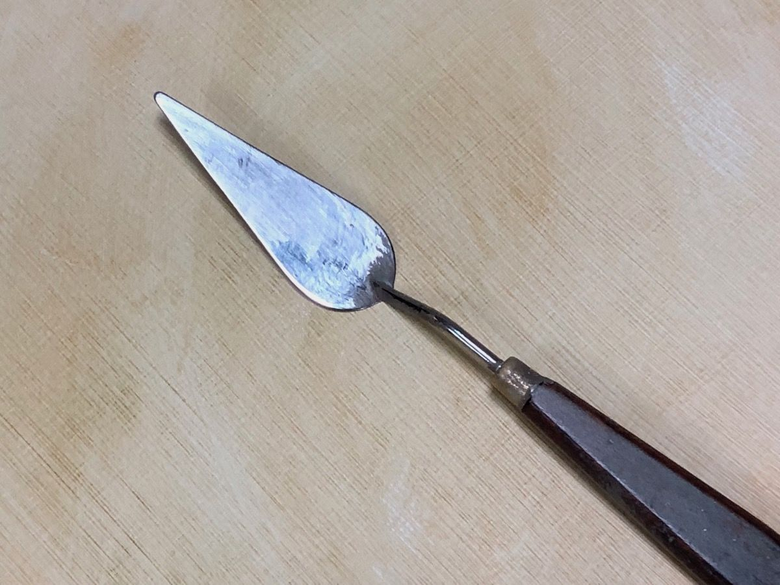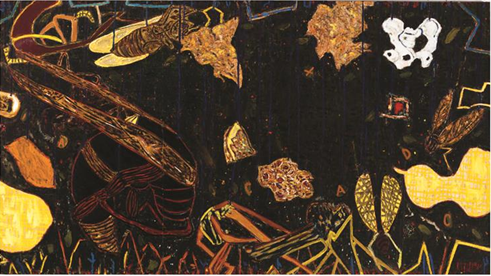Palette knife techniques that will enrich your paintings.
It can be used as an addition to or even a replacement for brushes in the creation of strong, compelling paintings.
Artsy Magazine
Painting with a palette knife
Patches
Palette knives are useful for applying clean patches of color onto blank canvas or over an existing dry layer of paint. The blade allows you to swipe a layer of color onto the canvas in a motion that recalls a baker smoothing frosting over a cake. With a palette knife, you don’t need to dilute your paint with medium as you would with a brush. As a result, the color that you apply with a palette knife is more vibrant.
If you apply a patch of paint too thickly, you can scrape some off using the edge of the palette knife’s blade. This method pulls off excess paint without weakening the color statement.
Lines
If you load just the edge of the blade with paint and draw it across the canvas, you can make crisp, ruler-straight lines. This technique is helpful for depicting man-made elements in a painting, like a ships’ rigging, fence posts, and the straight edges of furniture or buildings.
By modulating the pressure and angle of the knife stroke, you can turn these lines into fan shapes, zigzags, and sinuous curves.
Broken color
By lightly loading your palette knife with paint, then skimming it gently across the painting surface, you can create a paint layer with small, window-like openings that allow what’s underneath to show through. The size of these openings is dependent on both the pressure of the stroke and the texture of your surface. If you’re working on coarse canvas, you’ll get larger windows than on a fine-grained canvas or a smooth panel.
Texture
You can use palette knives to create both the illusion of texture and texture itself. Thinly applied strokes can replicate patterns such as wood grain or grasses, while thickly loaded strokes create marks that can be sculptural, protruding from the canvas surface. This extra dimension can be appealing, emphasizing the lushness and physicality of the paint itself.
Conversely, palette knives can be used to reduce texture. If an area has become too busy with textured brushstrokes of paint, you can lay the blade directly onto the wet paint and gently massage it flat. This will leave traces of the original color and can be a way to mix colors directly on the canvas.
Edges
Palette knives are excellent tools for creating a broad array of edges, from crisp and defined to blurry and ambiguous.
Edges in a painting are the places where two shapes or colors meet. They’re expressive places that can reveal what the artist wants to emphasize and the pace at which they want the viewer to examine the work.
A hard edge stops the viewer’s eye and draws attention to a particular area in the painting, while a soft, ambiguous edge allows the eye to travel, unimpeded, from one shape to the next. Some edges are varied, alternating between ambiguity and clarity many times along their length and causing the viewer to change their focus and rate of looking accordingly.
For a crisp edge, load your palette knife with paint, then lay it flat onto the canvas and pause before continuing the stroke away from the edge you’re trying to create. That momentary stillness will deposit a greater volume of paint than a swift, continuous stroke, emphasizing the edge.
A soft edge is made by slurring the paint together at the intersection of two colors. Press the palette knife onto the boundary and move it back and forth to work the patches of wet paint into each other. The colors will merge, de-emphasizing the edge and allowing the eye to travel across it more easily.
Place color onto wet paint
You can use a palette knife to place clean color notes onto a wet painting without disturbing the lower layers. Load the knife with a generous dollop of paint and dab it gently onto the surface of the painting. It will sit on top without mingling with the wet paint below, making this an ideal tool for creating highlights and dark accents.
Other uses for palette knives
Mixing paint
Palette knives are indispensable for mixing paint on your palette without wasting any pigment. Brushes collect paint in their bristles, and when you dab them into a clean pile of color, they may deposit some of that paint and contaminate the pile. When mixing with a palette knife, simply wipe the excess paint off the blade before dipping it into a new color. You’ll keep your paint piles clean and usable.
Scraping
A palette knife is also an excellent scraping tool for your palette and your painting. You can clean your palette at the end of a painting session by scraping the paint mixtures off with your knife and then giving the surface a final wipe with a paper towel.
If a painting isn’t working, scraping it down to the canvas with your knife will remove paint volume, while leaving a ghost of the image staining the canvas. This faint image can be used as a guide if you’re trying to tackle the painting again.
Palette knives can be used to create works of great precision or casual roughness, and they can create some effects that a brush cannot. They’re a worthwhile addition to any painter’s repertoire.
(Source: artsy.net)


